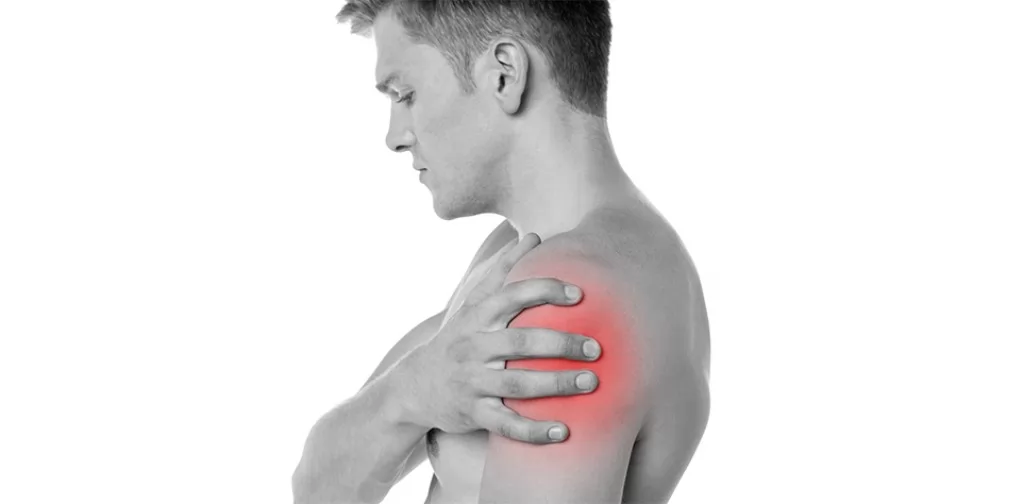Shoulder Pain
During the movements of the shoulder; The most important task falls on the structure we call the rotator sheath. A structure that functions so well is doomed to break down easily.
Rotator Sheath Tendinitis
In young people; It can occur with excessive strain on the shoulder after throwing anything uncontrollably. It occurs gradually, with an insidious progression for middle-aged people. This situation can sometimes be occupational, or it can occur after a sportive trauma. It can occur suddenly, especially forpeople who have a throw sport that they are not accustomed to. Cannot lie down on the sore arm at night. The upward movement of the shoulder is actively painful. The disease can easily become chronic. Therefore, it is significant to consult a doctor early.
In the treatment; In the initial period, rest and anti-inflammatory drugs (NSAIDs) are used. If there is no reduction during 2 weeks; the treatment including firstly ultrasound then deep warming physical therapy may be attemptable. However, if there is no response, local cortisone injection should be made in this area. As long as the principle of no more than 2 injections and 3 weeks intervals is followed, no significant side effects occur.
After the acute period has passed, some exercises should be done to maintain or even increase the range of motion of the joint. To strengthen the rotator shoulder muscles by running them against a resistance; It prevents future repetitions. “Subacromial decompression” operation may be required for patients with a high degree of wear on the rotator sheath and who do not respond to non-surgical treatments.
Calcified Tendinitis
It is a cause of shoulder pain, which is generally seen in middle-aged people over the age of 40 and whose cause is unknown. Calcium crystals precipitate on the worn rotator sheath beams. During this period, a slight pain occurs in the shoulder. But as the crystals gradually turn into a mushy structure, severe pain begins. And therefore shoulder movements are extremely restricted. This situation may recur from time to time. The duration of the attacks is variable, it can last up to 1 week or it can be prolonged for months.
Treatment is in the form of absolute rest and cold applications in the acute onset period. In the following periods, physical therapy methods and gradually increasing exercise programs come into play. Injection into the shoulder joint can quickly reverse acute symptoms. Injections are mixtures of cortisone and must not be done more than 3 times. Because uncontrolled use of cortisone can weaken the tendons and even cause them to rupture in the future. Calcium deposits in the joint can be easily seen with X-rays.
Subacromial Impingement Syndrome:
The area between the humeral head and the acromion is called the "subacromial space". When the arm is raised to the side (90 degrees abduction), the compression occurs the most. Various reasons can further increase this jamming. And over time, pain has begin in the shoulder that affects daily life. Conditions such as weakening of the rotator cuff muscles and calcification of the shoulder ligaments or joints can be counted among the causes.
This disease can occur in 3 different periods of life.
a) Before the age of 25; In occupations where the arm is kept in a position above the head for a long time; or in sports. It is more common in people who do whitewashing, swimming, handball, basketball and throwing sports. This can sometimes happen in middle-aged people who start doing sports and during an unfamiliar manual work.
The prominent feature in shoulder pain at this age is; The disease may disappear on its own over time. Painful arcuate test and shoulder impingement test are positive. If 10 ml of a local anesthetic (lidocaine 1%) is injected into the subacromial space and the pain disappears rapidly, the diagnosis is considered definitive.
b)For patients who ages of between 25 and 50; wear on the tendon has started. There is thickening and hardening in all structures of the joint. Crepitation (cracking sound) is obtained while moving the joint. Joint movements are limited, although not complete. Night sleep isdivided. There are difficulties have in many movements during the day. For example, these patients who cannot turn the steering wheel while parking their car, cannot shift the gear of the car, or have serious difficulties in turning to look behind while reversing may encounter various problems in traffic.
There are patients who cannot comb their hair, who have difficulty for doing housework. It can be confused with frozen shoulder and calcific tendinitis. There haven't significant change in direct radiographs but problems can be seen much more clearly in MR. Surgical treatment should be considered in patients who do not improve despite medication, physical therapy, exercise and shoulder injections given for 6 months.
c)For patients who over 60 years of age; There is advanced wear on the rotator cuff and related joints. And over time, tear have develop. Night pains were constant. The arm drop test may be positive. Outward opening of the shoulder is limited. When it is understood that the disease is at this stage, non-operative treatments (physical therapy, local special injections, exercises are performed as treatment) are performed for during 6 months. However, if no results can be obtained, the operation is decided.
